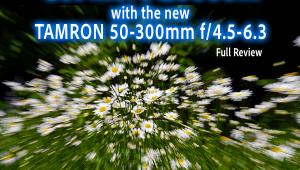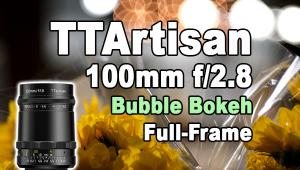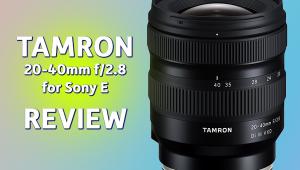Tokina’s AT-X 535 PRO DX; A Fast, Constant Aperture Zoom
The mid-range zoom I started with when I bought my Nikon D300 was no speed demon, and I was hankering for an f/2.8 lens in the (effective) 70-200mm range. What first attracted me to the Tokina AT-X 535 PRO DX was the fast, constant maximum aperture, providing a bright view every step of the way. What’s more, the barrel on this tele-zoom does not rotate when zoomed: all movement is entirely internal, including focusing, so the lens maintains a nice balance when hefted in your hand. Equally important, that means I can use a circular polarizer, then set it and forget it while zooming. Add to that the use of Super Low-Dispersion glass to minimize or eliminate chromatic aberration, and you have a really nice combination.
 |
|
|
For Nikon, with a 1.5x factor, the 50-135mm lens translates into 75-202mm. On Canon, that comes to 80-216mm, making it a bit longer in this mount. Working with this lens prompted comparison to my fixed focal length Canon 200mm f/2.8. It’s about the same size (also true of the Nikon 200mm f/2.8), but the Tokina zoom boasts a smaller 67mm filter diameter (in contrast to 72mm on the other two lenses).
A built-in tripod-mounting collar adds to the weight, but does not appear to do so appreciably. My only wish here is that this tripod ring be removable. That said, the collar rotates so incredibly smoothly and effortlessly when needed, making it a pleasure to use. And speaking of smooth operation, zooming and focusing rings rotate in a fashion that harkens back to manual-focus lenses. The zoom and focus rings are conveniently wide, nicely textured, and spaced so that, with practice, you could zoom and focus with one hand.
 |
|
|
|
 |
The 535 uses Tokina’s One-Touch Focus Clutch Mechanism to override autofocusing. This improvement over the clutch design used on earlier Tokina lenses replaces the AF/MF switch normally found on the lens barrel. It simply requires the focusing ring to be physically snapped backward to engage manual focusing or snapped forward to return to AF mode. You can’t simply override autofocus by manually rotating the ring; however, using this focusing clutch soon becomes second nature. In fact, in the heat of photographing any sort of action or movement, you’ll find this much quicker and more direct than resorting to an AF/MF switch, since you don’t have to take your eye off the subject.
 |
|
|
- Log in or register to post comments

















































